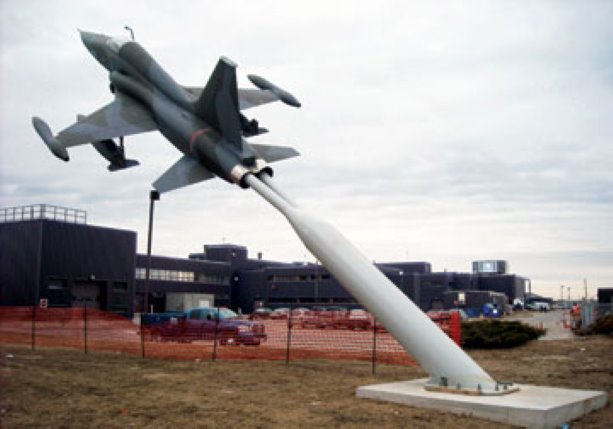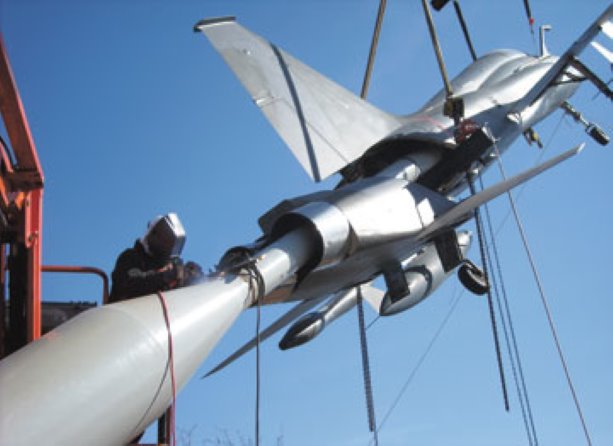Monuments to Canada’s impressive military history are found on display across the country. In some cases, the engineering that went into mounting the monument is almost as interesting as its military history.
In 2009, Western Mechanical Electrical Millwright Services Ltd. of Barrie, Ontario was contracted to mount a Canadian Forces CF-5 Freedom Fighter outside of the Defence Research and Development Canada (DRDC) building near former Canadian Forces Base Downsview in Toronto.
The aircraft was initially part of the Royal Canadian Air Force , enlisted in 1968 as a tactical support aircraft in Canada, as well as supporting the rapid deployment force of NATO’s northern flank. The aircraft weighs just under 3,000 kilograms, has a 7.87-metre wingspan, could reach a maximum speed of 1,575 kilometres an hour and flew to a range of 1,400 kilometres. After a 27-year service life, the aircraft line was retired in 1995.
“The only rule we had to observe was to ensure that no metal was welded to the airplane itself,” says Mark Carney, a structural engineer with Western.
Western was called in on the contract after a previous contractor had failed to successfully mount the aircraft. The initial approach consisted of a concrete pad and a hollow tube constructed of HSS 273×13 and hollow structural steel. The tube was bolted to the concrete pad and mounted at an angle, splitting off into two separate tubes designed to be inserted into the fighter craft’s twin jet exhausts.
“Unfortunately, the initial design of the job was miscalculated and the twin tubes were mounted too close together and couldn’t be inserted into the jet exhausts,” says Carney.
“The original contract also specified that the airplane needed to appear as though it was banking and these tubes weren’t installed at the proper angle to simulate that. Our job was to salvage any of the work we could and to get the airplane mounted as specified.”
Work began by cutting the twin pipes from the structural steel and reorienting them, both to simulate banking and to have them spread to accurately engage with the jet exhausts.
“We fashioned that part separately, so we could insert it into the 24-inch diameter exhausts while the plane was sitting on the ground,” says Carney. “It would have been too tricky to insert them into the plane while it was hoisted into the air.”
The exhausts themselves weren’t linear within the airplane, and the shape switches from a full circle to a half circle midway up, so friction fitting wasn’t an option. With the ban on welding, Western developed an alternate approach presented to the client. They would insert the tubes into the exhausts and fill the gaps with spray-applied polyurethane insulating foam that would conform to the shape of the cavity.
“We did the shop drawings like any other job, then contacted the insulating foam manufacturer to see what the load-bearing capacity of the foam would be, and it was rated within our specs,” says Carney. “We applied the foam, which cures instantaneously, then brought in a crane to hoist the airplane into place.”
With the airplane hoisted by crane and stabilized, the twin tubes were welded back onto the main structural steel support. All told, the project preparation took a couple of days, while the welding portion of the contract took a full day.
“At some point in the future, if they want to take the CF-5 down from the mount to display it in a museum, all they’ll need to do is brace it with a crane, then spray some acetone inside to melt the insulation and the aircraft would appear untouched,” says Carney.




Recent Comments
comments for this post are closed